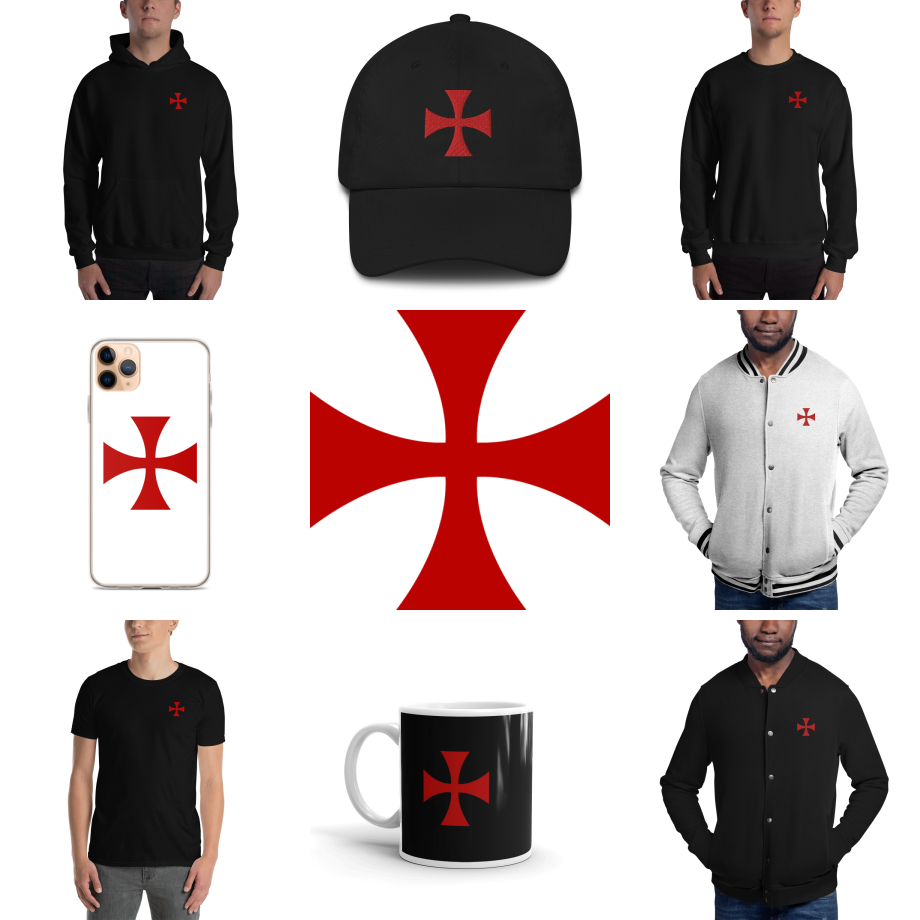DeMolay International is an international fraternal organization for young men ages 12 to 21.
It was founded in Kansas City, Missouri, in 1919 and named after Jacques de Molay, the last Grand Master of the Knights Templar.

Jaques de Molay – the last Grand Master of the Knights Templar – the namesake of DeMolay International
IMAGE LINKED: wikimedia Attribution 4.0 International (CC BY 4.0)
The Origins of the Order of DeMolay
The history of the organisation is a fascinating one. It all started in 1919, when Freemason Frank Sherman Land took a call from Sam Freet, the Senior Warden of his lodge.
Sam asked if Frank could do him a favour by giving a job to the son of their recently deceased Brother, Elmer Lower.
Frank readily agreed and the next day he met Louis Lower – who would be the inspiration for the founding of a new club for boys.
Frank invited Louis and his eight friends to meet him at the Masonic Temple – they were all fine upstanding boys, who were eager to hear more about Masonry and the possibility of becoming part of a club that would take on many of the teachings, morals, and ethics of the Craft.
However, they needed a name for the new club, so the boys asked Frank if he could tell them something about Freemasonry that might give them an idea.
Frank told them that he was currently head of a Masonic group as the Commander of the DeMolai Council of Kadosh.
He went on to describe how Masonry had some possible historical links to the Knights Templar, and in that story he talked of their last Grand Master – Jaques de Molay.
The story sparked the boys’ imaginations – a tale of heroism, chivalry, and martyrdom.
They were excited to think that they could emulate these virtues and decided that they would call the club the Order of DeMolay.
Frank and the other Freemasons made it clear that the boys would not be ‘junior Masons’ but that they could use the Masonic building for their meetings and would be supervised by Masonic members – their only condition, or concern, was that the boys use the opportunity to become decent and respected men in the community.
On 24 March 1919, the Order of DeMolay was launched – thirty-one boys, all from the same high school became members of what would in later years grow to become a global fraternal organisation – DeMolay International.
The Founder – Frank ‘Dad’ Land

Frank Sherman ‘Dad’ Land was born in Kansas City, Missouri, on 21 June 1890.
As a youth Frank was an enthusiastic boy preacher at his Sunday School. He went on to study at the Kansas Art Institute and at the age of 21 was elected president of the Municipal Art Club in Kansas City.
He joined Freemasonry in 1912, initiated into Ivanhoe Lodge No. 446 in June of that year.
He subsequently became Secretary of the Social Service Bureau of the Scottish Rite bodies, and was later selected as director of the Masonic Relief and Employment Bureau, a charity that would help hundreds of families.
Land was a successful community leader, and as a businessman, a flourishing restaurateur.
In January 1919, at the age of 28, he met 16 year old Louis Lower who had lost his father the previous year.
Frank became a role model and father figure for Louis and many other young boys as founder of the DeMolay Order – hence his moniker of ‘Dad’ Land.
In Land gave up his role with the Scottish Rite to become full-time Secretary General of the DeMolay organisation.
Aside from DeMolay, Frank Land continued his Masonic career. He was past Potentate of Ararat Shrine Temple and served as Imperial Potentate of the Shrine in 1954-55.
He was honored with the Knight Commander of the Court of Honor of the Scottish Rite and coroneted a 33° in 1925.
He was named an honorary member of the University of Missouri chapter of Acacia Fraternity.
He received the first International Gold Service Medal of the General Grand Chapter of York Rite Masons in 1951 for work in Humanities.
He received the Grand Cross of the Southern Jurisdiction of the Supreme Council of Scottish Rite 33° in 1955.
He was the president of the Kansas City School Board, a Director of the Columbia National Bank, and a trustee of the Harry S. Truman Presidential Library and Museum at the time of his death.
‘For nearly 100 years, DeMolay has been enriching the lives of young men by providing a fun-filled platform that unconsciously develops key life skills such as public speaking, fundraising, and event planning.
DeMolay counts among its alumni a multitude of standout gentlemen who turned their experience in DeMolay into the foundation of their professional careers.’
– DeMolay International
‘Dad’ Land died on 8 November 1959.
His dedication and commitment to inspiring and improving the lives of young boys paid off – hundreds of thousands of DeMolay members have since benefitted from his vision.
Today, every member of DeMolay International learns about Land through the book Hi, Dad! and their Chapter activities.
Recipients of the Degree of Chevalier take a vow to honor Land’s memory every year on 8 November by breaking bread with a fellow Chevalier, an active DeMolay, or a young man in his teens. DeMolay International also endows a scholarship in Land’s name.
DeMolay International Hall of Fame
The list of alumni is impressive and below are listed just a few well-known names:
Mel Blanc (1908–1989) – Cartoon voice actor
Bill Clinton (b. 1946-) – Politician, 42nd President of the United States
Walt Disney (1901-1966) – Founder of Disney
Edgar G. Mitchell (1930-2016) – Apollo 14 Astronaut, sixth man to walk on the moon
John Steinbeck (1902-1968) – Pulitzer Prize-winning author and Nobel laureate
John Wayne (1907-1979) – Actor
So what happened to that young lad who inspired the formation of a worldwide organisation? Louis Lower became the director of the Municipal Auditorium (Kansas City), an arena which opened in 1936 and has since hosted events ranging from Presidential Campaigns to NCAA Championships.
![]()
DeMolay Emblem
IMAGE LINKED: wikimedia Attribution 4.0 International (CC BY 4.0)
DeMolay Emblem – The crown appearing in the self-adopted heraldic arms (the emblem) of the order contains 10 rubies, each representing one of the original nine members and the organization’s founder, Frank S. Land.
The rubies were originally portrayed as pearls; as each founding member died, the pearl representing him was changed to a ruby.
DeMolay is open for membership to young men between the ages of 9 and 21 who acknowledge a higher spiritual power.
It has about 15,000 active members spread throughout every continent save Antarctica.
There are active chapters in Germany, Australia, Japan, Philippines, Argentina, Aruba, French Guiana, Paraguay, Peru, Bolivia, Brazil, Ecuador (affiliated to Peru jurisdiction), Italy, Romania, Greece (affiliated to Romania jurisdiction), France, Albania, Montenegro, Serbia, Bosnia (affiliated to Serbia jurisdiction) and the United States.
Although young women are not permitted to join DeMolay, chapters are permitted to elect chapter ‘sweethearts’ and ‘princesses’.
DeMolay is part of the ‘family’ of Masons and associated organizations. DeMolay is the youth group for young men. (Rainbow Girls and Job’s Daughters are similar Masonic-related organizations for young women.)
The structure of the Order
A local DeMolay body is known as a Chapter and is headed by the Master Councillor.
The Master Councillor is elected by members of his Chapter and is usually among the older members of the group.
The Master Councillor is assisted in his duties by a Senior Councillor and a Junior Councillor.
At a Provincial level the Order has a State Master Councillor, Provincial Master Councillor, or Jurisdictional Master Councillor.
There may be a National Master Councillor in some countries. There are also other state, provincial, or jurisdictional positions, based on the officers of a chapter, which vary for each jurisdiction.
The lead advisor (always a Master Mason and a member of the Supreme Council) in a state, jurisdiction, or country, is called an Executive Officer.
The lead advisor internationally is known as a Grand Master, who governs the International Supreme Council.
In some countries outside the United States, the International Supreme Council of DeMolay has ceded control to an independent Supreme Council created to govern DeMolay in that country.
Such a Supreme Council has its own Grand Master and officers. (Examples are Australia, Canada, Brazil, and the Philippines.)
Adult men mentor and supervise the Chapter and are referred to as ‘Dad’.
These men are often Masons or Senior DeMolays (former active members who have reached the age of 21) but can also be other men in the community, including the fathers of active members.
The ‘Dad’ term originated with young Louis Lower identifying Frank Land as a father figure, calling him ‘Dad Land’.
In recent years, women have also served as advisors [sic] for the group, and are referred to as ‘Mom’.
The Order has four stages of progression
(descriptions are extracted from the DeMolay International website):
Squire Manors – ages 9-11
‘Squires is a program for boys ages 9 to 11. It teaches important lessons about Justice, Truth, and Wisdom while participating in a variety of fun events and developing lasting friendships.
Squires hold “professional” meetings, attend fun events, and interact with DeMolays. A Squire is part of a Manor, and members hold an office within their Manor.
Each meeting and event has Advisors present who ensure safety, and work closely with the Squires. Active DeMolays give the Squires positive role models, and love interacting with their “little brothers”.
Parents are welcome to attend all events, and contribute to the success of the manor.’
DeMolay Chapters – ages 12-21
‘The DeMolay journey begins with the chapter, each a unique experience built around the same high values and leadership opportunities that have set DeMolay apart since its inception.’
Knighthood Priories – ages 17-21
‘The Order of Knighthood is a special group for older DeMolays (17-21) who have “been around the block”.
It serves as an opportunity for accomplished DeMolays to work towards new goals, and gives the older members an occasion to interact amongst themselves…
The official name of the Order is ‘The Chivalric Knights of the Holy Order of the Fellow Soldiers of Jacques DeMolay’.
Knighthood is not an honorary degree or award, but a working body whose purpose is to improve its members…
It is standout from DeMolay and Squires in its attire, and if available, swords are worn on the hip and are used during their proceedings.’†
The Precepts, or Cardinal Virtues
They encourage young people to become better citizens and accept the challenges of leadership by epitomizing timeless values – DeMolay have seven precepts/core values – called ‘Cardinal Virtues’, which are:
- Filial love (the love between a child and their parent): which is the love and the kindness we should have with our parents, the ones that gave us birth and taught us the first lessons in our lives. Through them we had the first lessons of kindness, respect and the belief in God.
- Reverence for sacred things: it means to believe in God (independent on the religion) and to respect others beliefs.
- Courtesy: kindness, respect and solidarity are principles that a DeMolay tries to practice in his life. Philanthropy is only valid when it is done by heart and soul.
- Comradeship: is to be a faithful friend, not only in good times, but also in hard times.
- Fidelity: is to believe and follow your own values and virtues; yet keeping in secret everything which is entrusted. Fidelity is to be faithful to God, your homeland and your friends, following the Jacques DeMolay fidelity lead, who preferred to die instead of betraying his companions or break with his pledge.
- Cleanness: means to be an ideal citizen, pure in soul and heart; it is to always have a clear conscience. It means to keep your mind away from everything that is against the values of a good citizen.
- Patriotism: is to respect and defend our homeland, our democracy, our state and our city over all. It calls for maintenance for the respect of public heritage, such as schools, asylum, orphanage and hospitals that support people in need.
The Order of DeMolay calls for every member to live according to those Virtues considered by the Order as something that distinguish the life of a leader and a good man. DeMolay also defends three fundamental freedoms:
Their Ethical Code includes the following statements:
A DeMolay –
- serves God
- honors all womanhood
- loves and honors his parents
- is honest
- is loyal to ideals and friends
- practices honest toil
- word is as good as his bond
- is courteous
- is at all times a gentleman
- is a patriot in peace as well as war.
- is clean in mind and body.
- stands unswervingly for the public schools
- always bears the reputation of a good and law-abiding citizen.
- by precept and example must preserve the high standards to which he has pledged himself*
Demolay International are keen to educate others about the Order and their work, their website is comprehensive and offers information on all their proceedings and includes an in-depth history.
The DeMolay Open Ceremonies are available to read as PDFs on the website HERE
*Text reproduced from Wikipedia under the Creative Commons Attribution-Share Alike License https://en.wikipedia.org/wiki/DeMolay_International
† Text reproduced from https://demolay.org/demolay-experience/#knighthood


Young Freemasons?: Frank S. Land’s Order of Demolay
By: Frank S. Land (Author), Guillermo De Los Reyes (Editor, Introduction)
The Order of DeMolay is a puzzle. It originated in the Untied States but is widespread, with chapters in Italy and Japan and Germany as well as Latin America and Canada, and with rituals involving events in medieval Paris.
It is closely associated with Freemasonry but its leaders emphasize it is not some sort of junior Masonic group.
President Bill Clinton was sufficiently committed to it that he interrupted a packed schedule to meet with fellow DeMolay leaders in Manila on his Philippine visit in 1995.
This book was edited by the founder of the order, Frank S. Land, during the early days of the movement, and is a surprising insight into a social phenomenon.

The Martyrdom Of Jacques Demolay
By: George W. Snow
This scarce antiquarian book is a facsimile reprint of the original.
Due to its age, it may contain imperfections such as marks, notations, marginalia and flawed pages.
Because we believe this work is culturally important, we have made it available as part of our commitment for protecting, preserving, and promoting the world’s literature in affordable, high quality, modern editions that are true to the original work.
Recent Articles: of current interest
 Keeping Passions and Prejudices within Due Bounds Master your emotions and find balance in a chaotic world with Darren Allatt's "Keeping Passions and Prejudices within Due Bounds." Discover practical strategies for self-awareness, emotional intelligence, and building meaningful relationships. Transform your life with calmness, clarity, and purpose. Start your journey towards emotional mastery today. |
 Masonry in the Age of Leisure - P2 Explore the optimistic future of Masonry in "Masonry in the Age of Leisure" by VVenBro Scott Wisdahl. Delve into the possibilities of a leisure-driven society where technology enhances social bonds, decentralizes the Craft, and reshapes Masonic traditions. Discover how Masonry can thrive in an interconnected, tech-savvy world. |
 Masonry in the Age of Leisure - P1 Embrace the future of Masonry in the Age of Leisure! Imagine an era where technology empowers deeper connections, offering a tapestry of diverse groups united by Freemasonry’s timeless values. Envision hybrid meetings transcending borders, fostering brotherhood across continents. This optimistic future cultivates intellectual growth and social interaction, heralding a Masonic renaissance for all. |
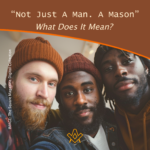 “Not Just A Man. A Mason”: What Does It Mean? Embrace the profound essence of Freemasonry, not merely a group but a journey of integrity, shaping men of dignity. By adopting virtues such as honesty, justice, and brotherly love, Freemasonry transcends time, urging us towards a dignified life. It’s more than being a man; it’s about living with unyielding dignity. |
 Multiculturism and the Culture of Freemasonry Freemasonry, with its deep roots in universal principles such as individual freedoms, education, and the pursuit of science, stands as a beacon of unity in a world divided by conflicting ideologies. By embracing the tenets of Freemasonry, including respect, peace, and mutual understanding, we can navigate societal challenges and foster a more harmonious world. |
 Embrace the new paradigm of eco-conscious living in the 21st century. Freemasonry, a cornerstone of society, must evolve, placing Nature at its heart. Reject anthropocentrism, embrace deep ecology, and champion sustainable living and global cooperation. Let Freemasonry lead by example, advocating for a world where humans and nature coexist harmoniously. |
 How Freemasonry Has Woven Itself into the Fabric of Society Like the weathered stones of an ancient temple, Freemasonry's origins are shrouded in mystery. This fraternal order has woven invisible threads throughout society's fabric since emerging in the 1600s. Despite declining membership, Freemasonry's influential legacy endures, seen in philanthropy, architecture, and the ideals of legendary members. Though facing challenges, revival remains possible if it adapts traditions to the modern era. |
 AI help in matching mentors with new Freemasons Harnessing AI for Freemasonry Mentorship: A Comparative Analysis. Freemasonry, an age-old fraternity, seeks to enhance its mentorship program by leveraging AI. While the Grand Master suggests detailed member profiles for matching, a Professional Coach emphasizes personality compatibility. Meanwhile, an AI Bot proposes machine learning for pattern recognition. Dive in to explore the potential and pitfalls of each approach. |
 Masonic Charities P.2 – The Shriners Discover the Shriners' legacy within Freemasonry; delve into their profound commitment to philanthropy and see how Masonic Charities demonstrate brotherly love, relief, and truth. Become inspired by the bonds that unite Shriners around the globe and their impactful work in local communities. |
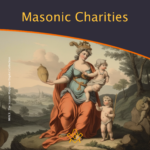 Freemasonry's commitment to charity has always been a priority and remains a core principle, reflecting its mission to promote brotherly love, relief, and truth in the world. Part 1 of the series gives an introduction to the establishment of the main Masonic Charitable endeavours in the 18th and 19th centuries and several key influencers. |
 Solomon Learning and Development Platform The Intersection of Freemasonry and Technology: Embracing the Digital Age with the New |
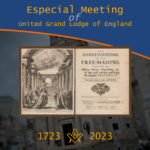 Especial Meeting of United Grand Lodge of England The year 2023 marks the tercentenary of the publication in London of the Constitutions of the Freemasons, based on Enlightenment principles that provide the philosophical foundations of modern Freemasonry. Why are the 1723 Constitutions important? Many Masonic histories have been concerned with ‘when’ and ‘what’. We also explore ‘why?’ |
 Like every other incident of initiation it is in the light of the larger meanings of Freemasonry that we must interpret the Rite of Destitution. But what does it mean? |
 Society of Grand Lodges in Alliance (SOGLIA) is a confederation of Grand Freemason Obediences in which all members obey the principles of Regularity. Assembled annually, in different places of the world, in order to share fellowship and to promote Masonic tradition, SOGLIA members are respecting the autonomy of each Grand Lodge. |
 Confederation of the Grand Lodges of Europe and the Mediterranean - Universal Freemasonry and its intellectual property are less and less taken into account in the current times of constant movement and unclear future prospects. |
 The Book of Law in Brazilian Freemasonry We are informed that, Freemasonry it is not a religion, but the candidate has a belief in a creative principle, which later, we call the Great Architect of the Universe. - by Fernando Rodrigues de Souza |
 Mike's Masonic Walks And Talks WBro. Mike Neville is a Masonic author and lecturer. He offers walks and talks primarily around London, based on his vast knowledge of the area and his specialist subjects, which cover all aspects of Masonic history. |
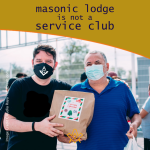 A Masonic lodge is not a service club An address delivered to the 10th Annual Conference of Western Canadian Grand Lodges (1950) in response to the question, "Should Our Western Grand Lodges Sponsor a Specific Program?" By |
 The Order of Bees was established as a youth initiative for the boys and girls of Prince Hall Freemasons, and symbolises the relationship existing between the activities of the youth and the family of bees. |
 The Confederación Masónica Interamericana (CMI) was founded in 1947, is a non-profit organization that groups together 92 Great Masonic Powers, admitted as members and distributed in 26 countries in South, Central, North, Caribbean and Europe. |
 This smartphone app is designed to work with all Freemasons from both Regular and Independent Grand Lodges around the world. |
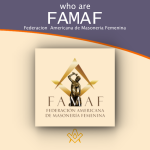 The American Federation of Feminine Freemasonry (FAMAF) is an organization that brings together Grand Lodges, Grand Orients and Confederations of Feminine Masonic Grand Lodges from the American continent. |
 The third largest Masonic Alliance of independent grand lodges, which currently has over 500,000 members in the world and an incredible resource of "good people with a good reputation" from around the world. |
 A Guiding Paw - my faithful 'brethren' A heart-warming story of one Mason's best friends – and how Gary's faithful guide dogs have helped fulfil both his Masonic life but also his valuable work in public service. |
 A visit to the Mother Lodge of Scotland Let me take you to the heart of Scotland to meet our Brethren of the Mother Lodge of Scotland, a journey into one of Freemasonry's deepest roots. Our guide Carlos Oliveira Santos who is from |
 An introduction to VEREINIGTE GROSSLOGEN von Deutschland / UNITED GRAND LODGES of Germany |
 International Masonic Union CATENA An international association of Grand Lodges and independent Lodges, with all true Masonic traditions, which adhere to the basic principles of the equal standing of men and women in Freemasonry |
 Social Impact of Prince Hall Freemasonry in D.C., 1825-1900. Alonza Tehuti Evans discusses Prince Hall Freemasonry, founded by African Americans. |
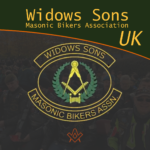 Who are the Widows Sons, and what do they do, and how can you join ? |
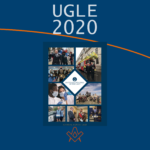 For the first time in its 300 year history UGLE has published an Annual Review |
 Founded in 1919 and named after the Grand Master of the Knights Templar, this International Order has helped young boys become great men. |
 9th International Conference of Freemasonry Hidden Meanings: Esotericism and Masonic Connections |
 An introduction to CLIPSAS and we look at who are they and what do they do |
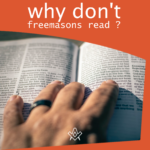 The title of this article will seem somewhat of an oxymoron, because at this precise moment you, most likely a Freemason, is reading this |
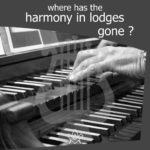 Music can make you either remember everything or forget everything! They even call it the 'rhythm' of life because life does have a beat, a rhythm, a song! Music is equally important for Freemasons. |
 Young Masons' Inter-Club Virtual Social An initiative was created to initially keep Brethren engaged in their Masonry whilst the restrictions of the COVID-19 pandemic are in place. |
 I've heard people say that we don't have heroes |
 What can we learn from Steve Jobs' address given at Stanford in 2005 |
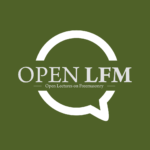 Open Lectures on Freemasonry as a series of monthly online lectures that aims to increase the visibility and accessibility of research into Freemasonry. The lectures are open to anyone who is interested. |
 What Kind of Library Do You Have? Many Brothers have no clue as to what kind of "Craft" library they actually have in their home or office. Most of these Brothers don’t care that they don't know – so, what kind of library do you have? |
 Russian Freemasonry a combination of a short sketch of its history and a review of the present-day Masonic landscape in this country |
 A brief outline showing the differences and similarities within Freemasonry |
masonic knowledge
to be a better citizen of the world
share the square with two brothers

click image to open email app on mobile device
